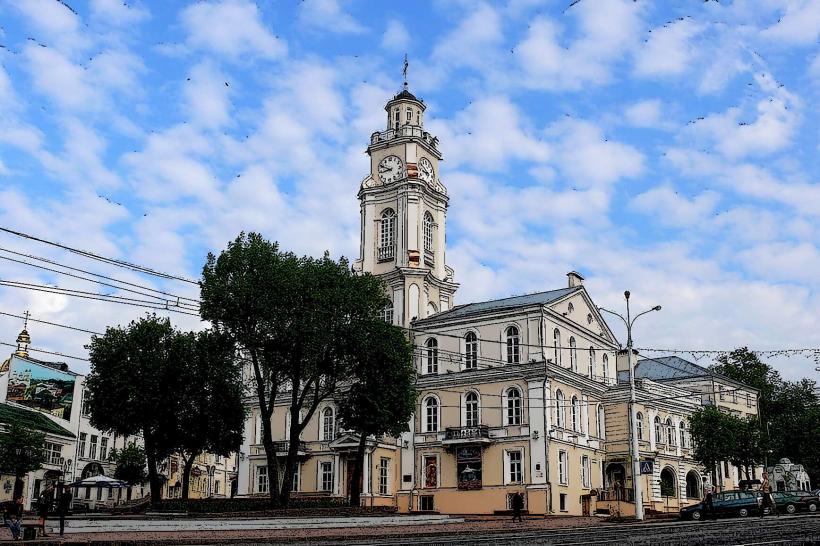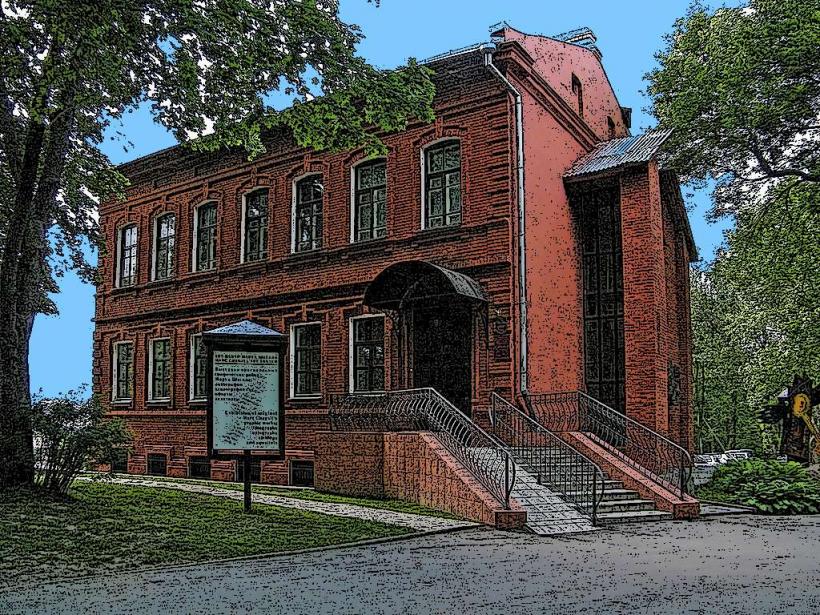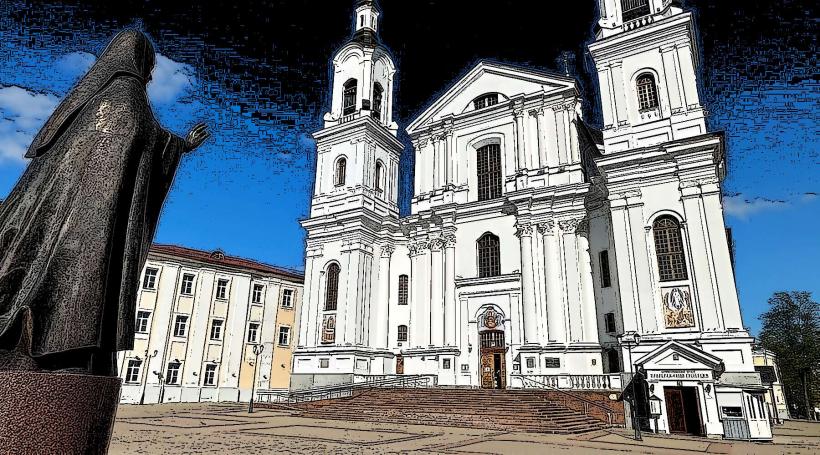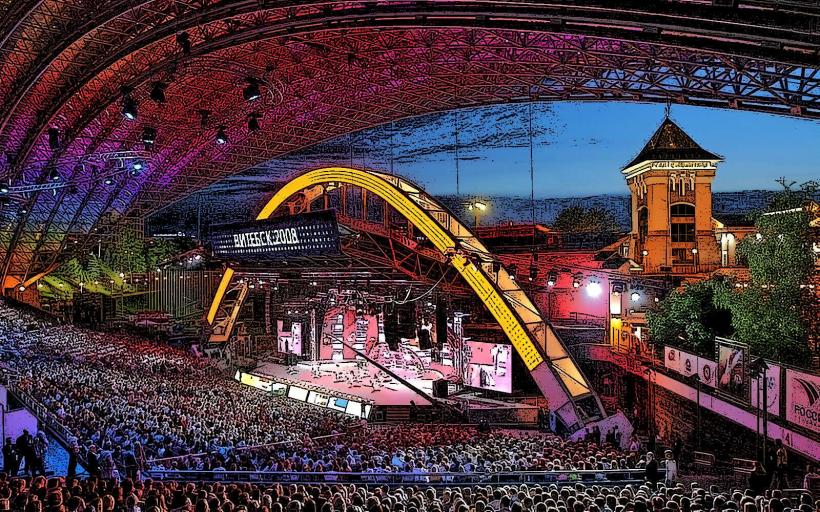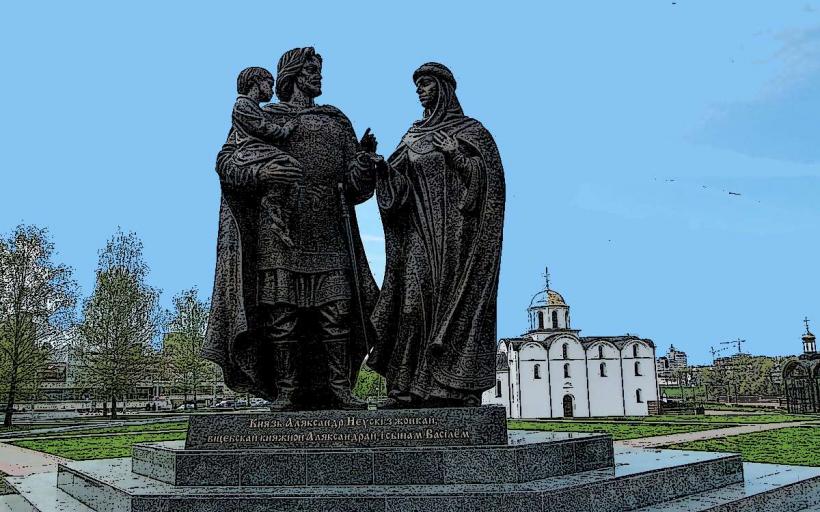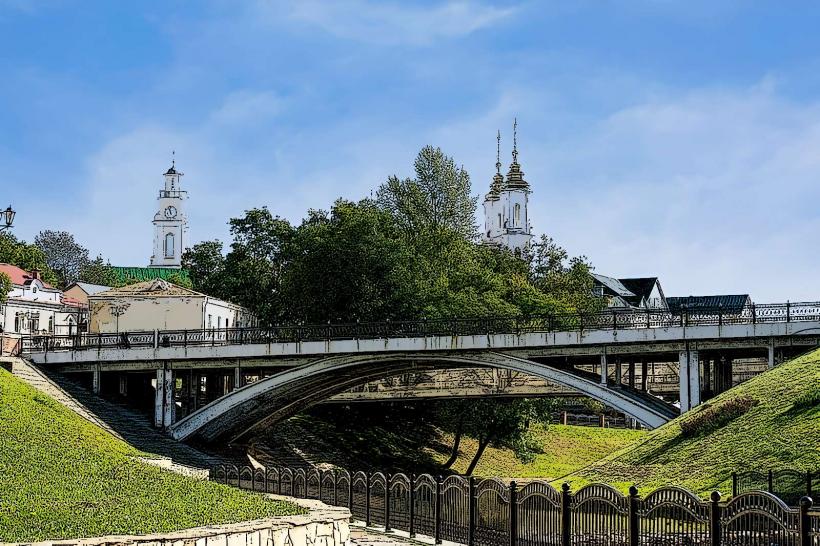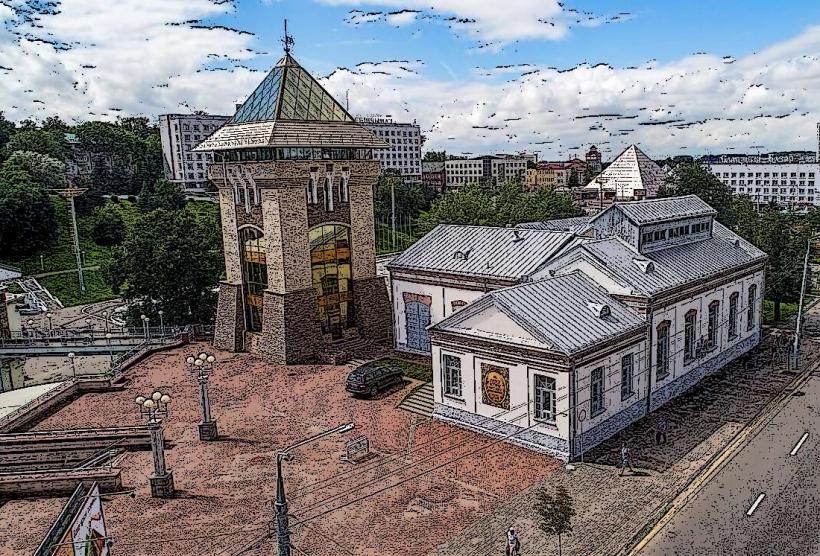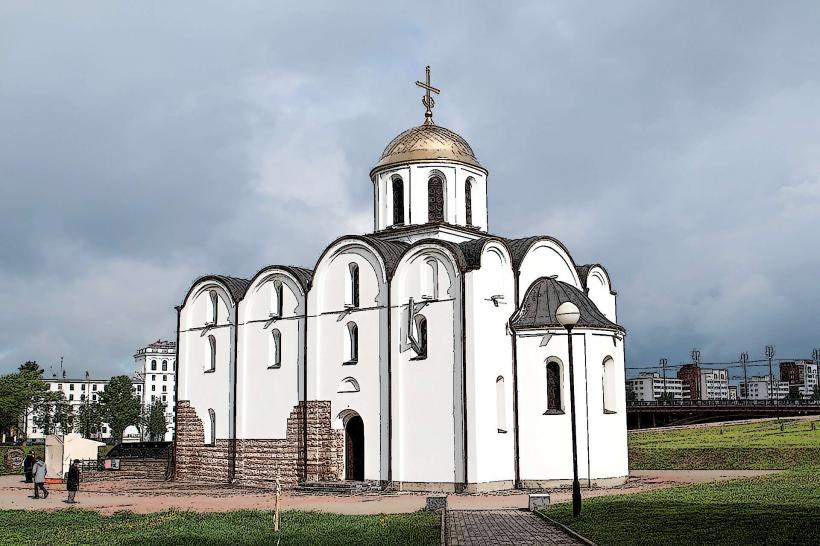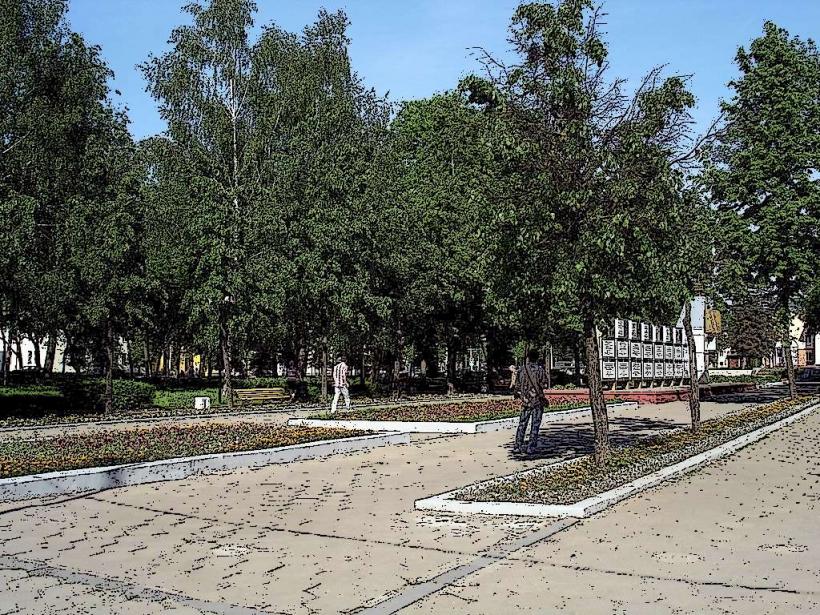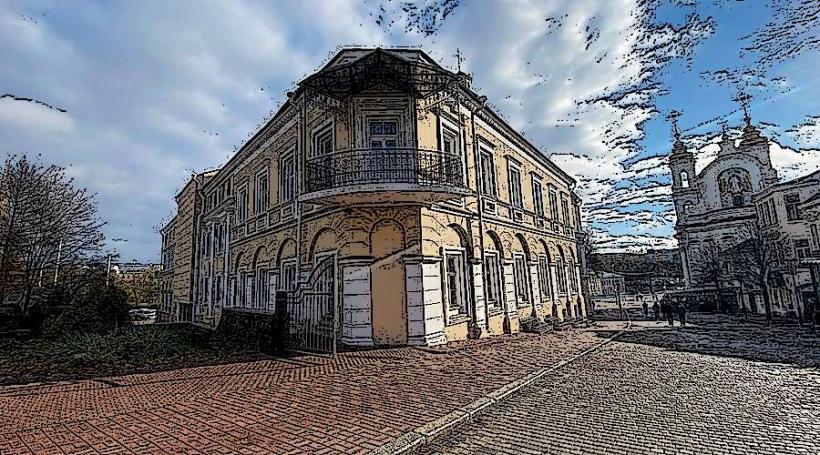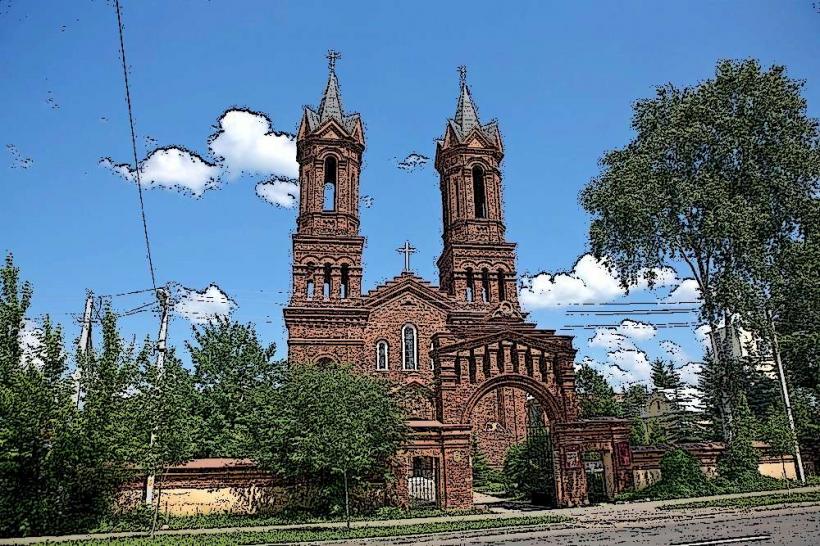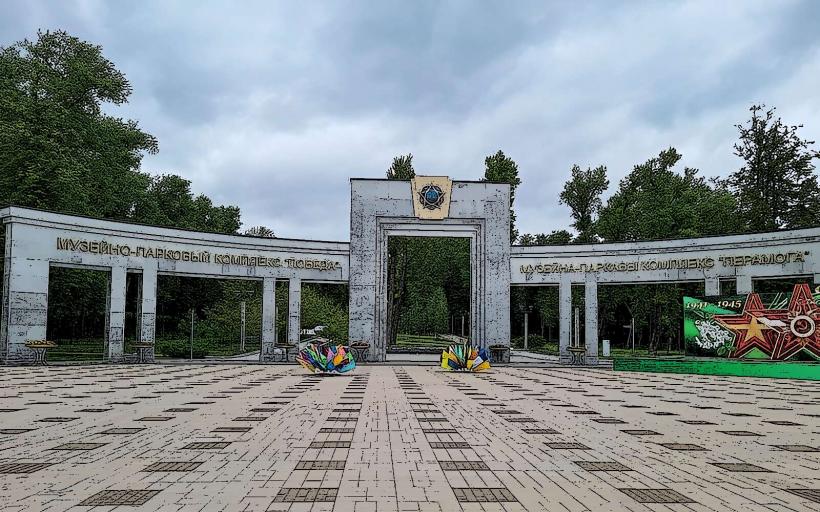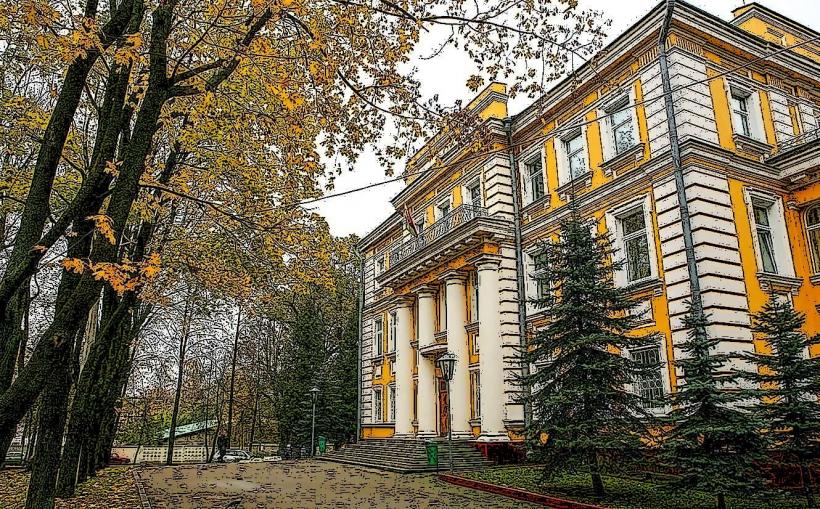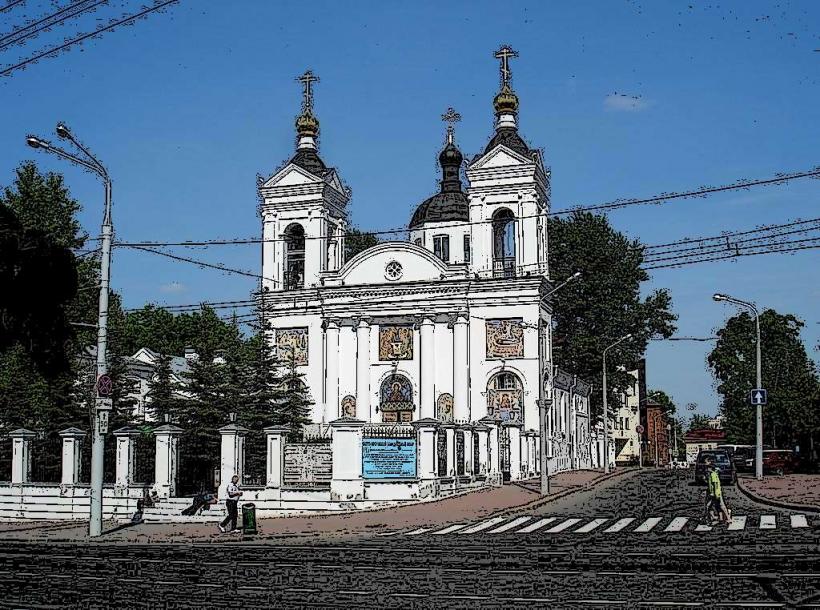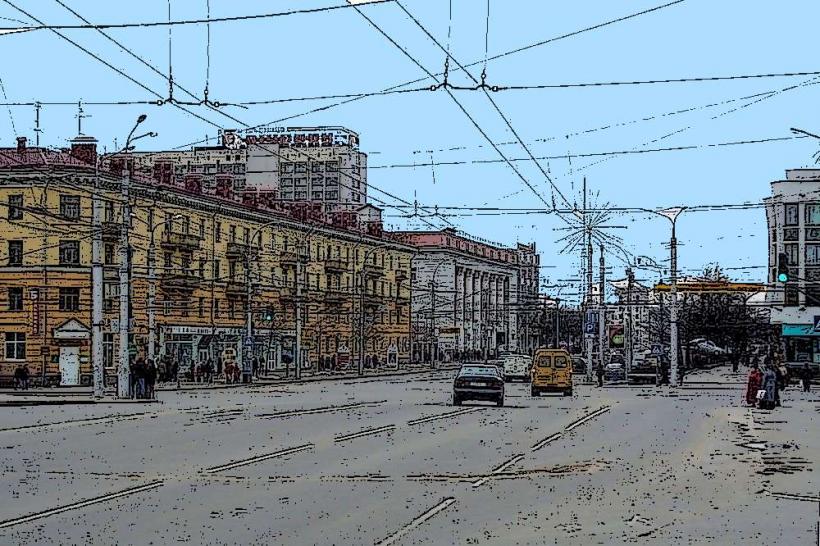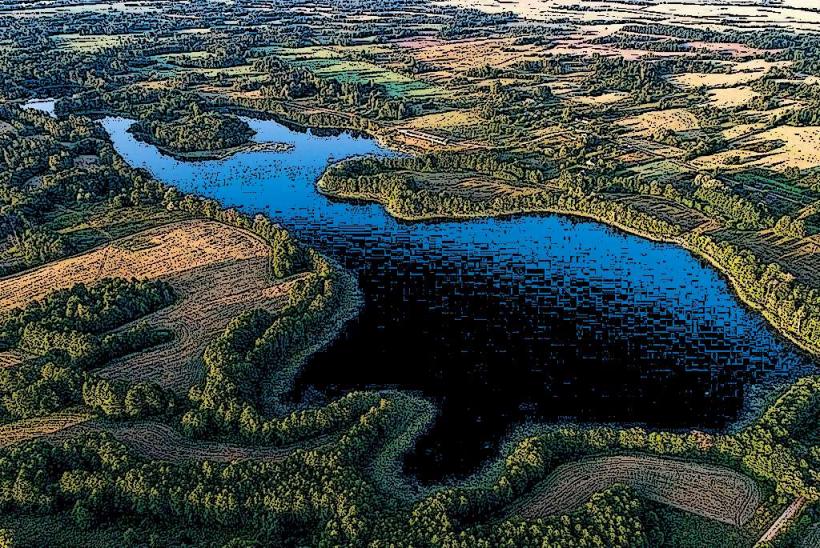Information
Landmark: Victory SquareCity: Vitebsk
Country: Belarus
Continent: Europe
Victory Square (Ploshchad Pobedy) in Vitebsk, Belarus, is a central and significant public space, commemorating the victory of the Soviet Union over Nazi Germany during World War II. The square serves as a prominent landmark in the city and is dedicated to the memory of those who fought and died in the Great Patriotic War (the Eastern Front of World War II). Here’s a detailed look at Victory Square:
Historical Background
Victory Square was established as part of the broader effort to commemorate the sacrifices made during World War II, particularly the victory of the Soviet Union in 1945. The square was designed to be a space for remembrance and reflection, with monuments and architectural elements that honor the fallen soldiers and the resilience of the Soviet people during the war.
The square, which has been a focal point of public events since its creation, is located in the center of Vitebsk, making it one of the city's most important landmarks. Over the years, it has become a symbol of pride and patriotism for the residents of Vitebsk and a place where annual commemorations of Victory Day (May 9) are held.
Key Features and Monuments
Victory Square is home to several key monuments and landmarks that highlight the significance of the space as a memorial. Some of the most notable features include:
The Monument to the Soldiers of the Great Patriotic War:
- The central monument is dedicated to the soldiers who fought and died in World War II. It features a towering obelisk with an eternal flame at its base, symbolizing the perpetual memory of the fallen. The flame is a common feature in Soviet-era war memorials, symbolizing the unyielding spirit and sacrifice of those who fought in the war.
- The monument is accompanied by sculptures representing soldiers and figures from the war, including soldiers, nurses, and workers, all of whom played a crucial role in the victory.
Eternal Flame:
- The Eternal Flame is a prominent feature of the square, symbolizing the everlasting memory of those who perished in the war. It is a key part of the square’s function as a site for annual Victory Day ceremonies and other commemorative events.
Sculptures and Reliefs:
- Throughout Victory Square, there are various sculptures and reliefs that depict scenes from World War II, showcasing the sacrifices made by ordinary people and soldiers. These artistic elements serve as a reminder of the cost of victory and the resilience of the people who lived through the conflict.
- Reliefs featuring the Soviet flag, military vehicles, and soldiers’ portraits provide visual reminders of the war effort and its significance in shaping the modern history of Belarus.
The Red Star:
- Another prominent symbol in Victory Square is the red star, a classic emblem of the Soviet Union. This star is often integrated into the design of the monuments or placed prominently within the square, reinforcing the Soviet connection to the historical events being commemorated.
Nearby Green Spaces and Walking Paths:
- Surrounding the square are green spaces with trees and benches, providing a tranquil environment for visitors to reflect on the significance of the square. Walking paths meander through these areas, adding to the peaceful and solemn atmosphere of the memorial.
Role in Commemorative Events
Victory Square plays a vital role in the observance of Victory Day (May 9), a major public holiday in Belarus and other former Soviet republics. The holiday marks the surrender of Nazi Germany and the end of World War II in Europe.
On Victory Day, large-scale events and ceremonies are held in Victory Square, including:
- Military Parades: The square hosts military parades, where soldiers march in tribute to the victory and those who fought.
- Wreath-Laying Ceremonies: Local authorities, war veterans, and citizens gather at the Eternal Flame to lay flowers and wreaths in honor of the fallen soldiers.
- Cultural Performances: The square is also a site for concerts, performances, and other cultural activities that celebrate the heroism and resilience of those who fought in the war.
- Public Gatherings: Many people, including families and school groups, visit Victory Square to participate in the commemorative activities or to reflect quietly at the memorial.
Architectural and Urban Context
Victory Square is located in a central area of Vitebsk, easily accessible by public transportation and within walking distance of other important landmarks in the city. The square is surrounded by various government buildings, cafes, and parks, making it a bustling part of the city while still maintaining its solemn function as a war memorial.
- Layout and Design: The square’s layout is designed to create a sense of grandeur and respect, with broad open spaces surrounding the central monument. The surrounding area includes tree-lined paths and well-maintained lawns, contributing to the overall dignity of the space.
- Public Space: In addition to its role as a memorial, Victory Square is also a popular space for locals and tourists to gather, relax, and enjoy the surrounding environment. It is often used for other civic and public events throughout the year.
Visiting Victory Square
Victory Square is open to visitors year-round, and it is a peaceful and reflective place to learn about Vitebsk’s history and the significance of World War II to the region. Visitors can take in the monuments, stroll through the green spaces, and reflect on the events commemorated there.
- Opening Hours: The square is open to the public at all times, though ceremonies and events may have specific times, especially on Victory Day.
- Admission: There is no entrance fee to visit Victory Square, as it is a public space and memorial.
- Guided Tours: Visitors can learn more about the history and significance of Victory Square through local tours, which often include information about the monuments and the role of Vitebsk during the war.
Conclusion
Victory Square is one of the most important places of memory and reflection in Vitebsk, commemorating the sacrifices made during World War II. With its central monument, eternal flame, sculptures, and rich historical significance, the square is both a place of remembrance and a space for the city’s residents to honor their shared history. Whether attending an event, reflecting quietly, or simply exploring the area, Victory Square remains a powerful symbol of resilience and the collective memory of those who fought for victory.

